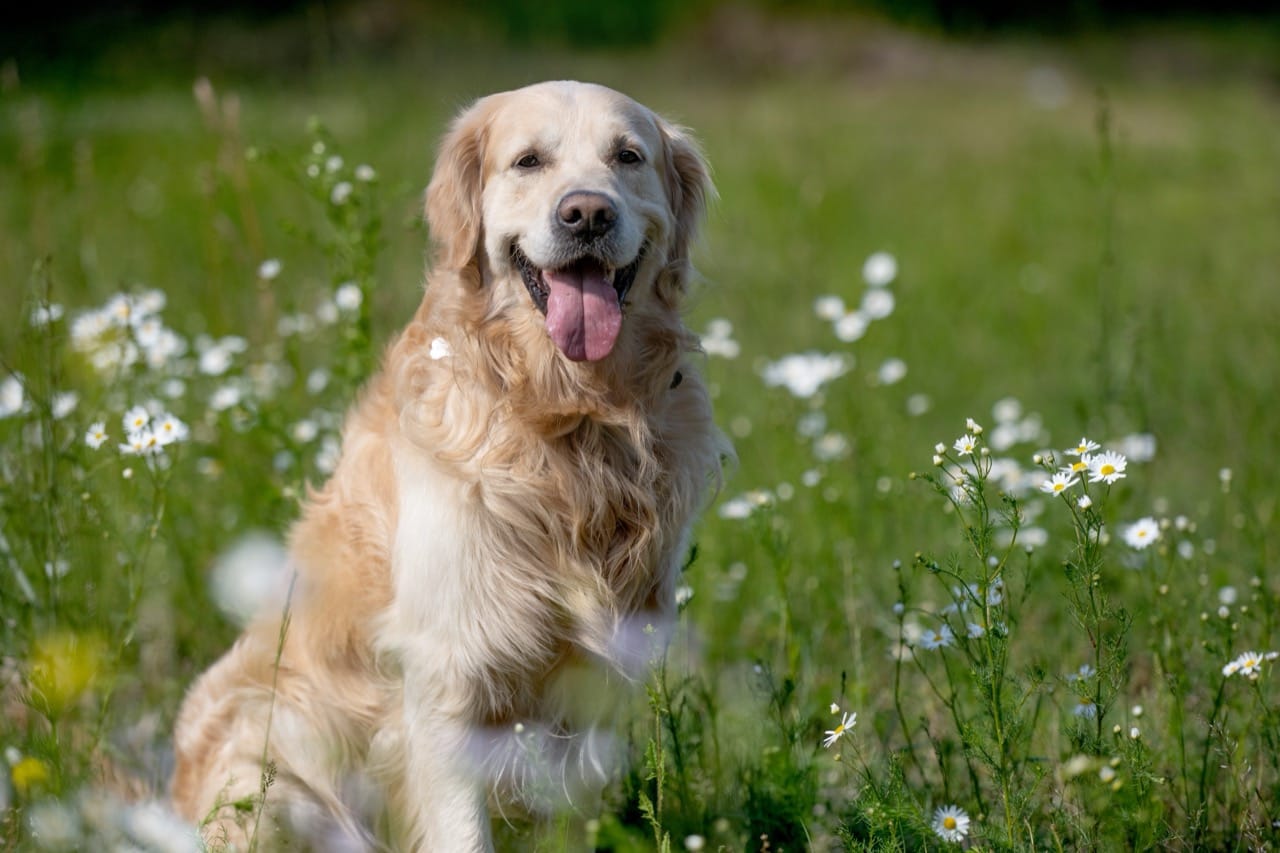The Golden Retriever, with its lush, waving coat of gold, is one of the most beloved dog breeds in the world, known for its friendly, tolerant attitude. These dogs are not just pets; they are companion animals, therapy animals, and helpers in various human endeavors. Their intelligence and versatility make Golden Retrievers a fascinating subject for anyone interested in the human-animal bond.
Characteristics / Physical Description
The Golden Retriever is a sturdy, muscular dog of medium size, famous for its dense, water-repellant coat which is usually a rich, lustrous golden color of various shades. The breed’s broad head, with its friendly and intelligent eyes, short ears, and straight muzzle, is instantly recognizable. An adult typically weighs between 55 and 75 pounds, with males generally larger than females.
Taxonomy and Classification
Golden Retrievers belong to the Canidae family, which includes other domestic dogs, wolves, and foxes. Scientifically, they are classified under the genus Canis, species C. lupus, and subspecies C. l. familiaris, indicating their close genetic relationship to wolves and other domestic dogs.
Behavior and Social Structure
Golden Retrievers are known for their sociable and friendly nature. They are highly trainable due to their intelligence, eagerness to please, and ability to focus on tasks. This breed is known for its patience and gentleness, making them excellent family pets and companions for children. They thrive on interaction and can become mischievous or melancholic if left alone for long periods.
Habitat and Distribution
Originally bred in Scotland in the mid-19th century, Golden Retrievers are now found worldwide, primarily as family pets. While they are adaptable to various living situations, they do best in homes where they have plenty of space to play and access to outdoor activities.
Diet and Feeding Habits
As active dogs, Golden Retrievers require a well-balanced diet rich in nutrients. They tend to gain weight easily, so their diet should be carefully managed to prevent obesity, especially since they can be very food-oriented. High-quality commercial dog food, balanced with occasional treats and supplemented with fruits and vegetables, is ideal for maintaining their health.
Breeding and Reproduction
Golden Retrievers reach reproductive maturity by about one to two years of age. Responsible breeders screen their breeding dogs for genetic diseases like hip dysplasia and certain heart conditions. A typical litter size ranges from six to ten puppies. Early socialization and training in puppyhood are crucial for developing well-adjusted adult dogs.
Relationship with Humans
Golden Retrievers are highly valued for their compatibility with humans. They are widely used in roles such as search and rescue, therapy, and assistance dogs for the disabled. Their gentle demeanor and intuitive nature make them excellent at such tasks.
Evolutionary History
The breed was developed in Scotland in the late 1800s from the now-extinct Tweed Water Spaniel, the Newfoundland, the Irish Setter, and a variety of water, spaniel, and retriever breeds. This mix was intended to create a perfect gundog suited for the rainy climate and rugged terrain of the region.
Use as Research Animals
Due to their trainability and good nature, Golden Retrievers have been involved in many types of scientific research, particularly in studies related to animal behavior, cognition, and health.
The Golden Retriever remains one of the most popular and recognizable breeds worldwide, a testament to its remarkable attributes and the strong bond it shares with humans.

